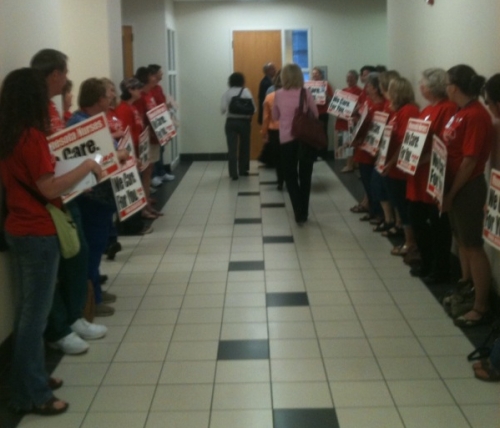St. Luke’s Bargaining Update – Duluth (May 28)
 Update from: Cyndi Prout, RN, Chair, MNA’s Saint Luke’s Hospital bargaining team.
Update from: Cyndi Prout, RN, Chair, MNA’s Saint Luke’s Hospital bargaining team.
We just had our second bargaining session and we greeted management with the largest welcoming committee of nurses they have ever seen.
We felt the energy of our sister and brother nurses from Saint Luke’s and SMDC today! It shows that we really are united. It was great to be there yesterday for SMDC and it felt great that they came out for us! Now is our time in Duluth for Nurses to take a stand for safe staffing and patient care.
… Read more about: St. Luke’s Bargaining Update – Duluth (May 28) »








![All Nurse June stplb[1]](http://mnnurses.files.wordpress.com/2010/05/all-nurse-june-stplb1.jpg?resize=500%2C647)

